Well, you saw us unpack this beast last month, which was a 7-minute task in itself. It’s taken us quite some time to listen to the 500+ songs featured on the 21-disc collection, but we’ve done it, and we’re here to tell you about the experience.
If this collection taught me one thing, it’s that the SaGa series is pretty damn huge. Bigger than I had ever realized. Also, it features music from some of the most famous Square Enix composers in history, including Nobuo Uematsu, Kenji Ito, and Masashi Hamauzu, which I think some tend to forget. This is a truly impressive collection of music, and I’ve been looking forward to telling you about it ever since I got my hands on the thing.
Let’s get to it on our review of the SaGa Premium Box after the jump.
I wasn’t quite sure how I was going to tackle this thing at first. I admit I was most looking forward to the first three discs, which feature the music from the original SaGa (Final Fantasy Legends) games on the Game Boy. With that in mind, however, I decided to start backwards, from Romancing SaGa -Minstrel Song- to the original SaGa, and I feel that this format really provides a nice retrospective look at the series.
Let’s jump right in! Honestly, the first thing I noticed when listening to Romancing SaGa -Minstrel Song-was that the synth quality wasn’t all that great. I thought I remember it being a lot better, but I guess the soundtrack was released over 4 years ago in 2005. The first three discs (17-19) actually contain the game’s soundtrack proper, while the fourth is dedicated to jingles and shorter tracks. To mention a few of the highlights, you have the series standard “Opening Title,” which is delightful in any way, shape, or form that you can find it in, and of course, there’s an amazing synth rock battle track titled “Prelude to Battle.” Looking back at the SaGa series, one thing you’ll find is that they have really strong battle themes, and this is no exception.
Tsuyoshi Sekito did a great job with some of the rock tracks on this score, including “The Soul of Fire” and “Awakening Memories -The Battle with Sherah-,” the latter of which actually sounds like it could be a Black Mages track. I’d compare his work on this album to a more accessible version of Motoi Sakuraba.
I mentioned synth quality earlier, but “Minstrel Song” actually nails it pretty well with its whimsical guitar melody. “Passionate Rhythm” similarly features Spanish guitar and female vocals, and is one of the most memorable tracks from the game. I also enjoyed “Melody of Evil and Divinity” with its dark string melody, harpsichord, and classical style reminiscent of Granado Espada and “Wipe Away the Tears,” which is one of the most significant tracks on the album as it references a “sad” theme from the original SaGafrom 1989. The final track is a nice piano arrangement of “Eternal Emotion” performed by Kenji Ito, which is a nice addition.
Next up is Unlimited SaGa. While this game was terrible, it’s one of my favorite modern SaGasoundtracks. It was scored by Masashi Hamauzu, comes in at 2 discs, and sounds surprisingly better in the sound quality department than even -Minstrel Song-! The thing about Hamauzu is that he generally writes lots of shorter tracks that come in around the 2 minute mark, but what he does write is amazing.
It opens with “Unlimited: SaGa Overture,” which is an awesome and bombastic orchestral track. The obligatory “Battle Theme I” is typical Hamauzu with some amazing violin work that works great alongside the jazzy hi-hat laden percussion. I particularly love the jazzy piano work that builds on top of a trailing synth note that sounds like a siren’s call.
The second disc is where it gets good, however, starting with the fisrt track, “Time-Space Travels,” which is a strange space jazz/electronic fusion with some nice piano work, a driving drum beat, and a deep bass. It’s followed immediately by “DG ‘sine’,” my favorite track on the album with its experimental electronic approach, pairing a wavering synth lead with a snappy percussion and piano notes that play on the upbeats. It’s a groovy, laid back track that I’ve always had a soft spot for.
SaGa Frontier 2 sounds absolutely amazing given that it was released ten years ago in 1999. I’m also sorry to admit that it too sounds better than -Minstrel Song-. It’s 3 discs in length, and all the track titles are in German. This was certainly an interesting one. I loved the beautiful woodwind and string duet, “Rosenkranz,” as well as the harpsichord and upbeat string melody of “Der Hauptmann.”
I was immediately drawn to “Freiluftmusik,” which is super upbeat and contains a melody that sounds very similar to Radiohead’s “Subterranean Homesick Alien.” “Wundermittel” is downright beautiful with its use of belltones, and “Interludium” is a sweet piano ditty that dances around playfully. It’s really cute, and will put a smile on your face.
Getting to some of the darker tracks, “Unmacht” works in piano and a mysterious woodwind, while “Weltall” is deliberate with its phasing synths, clicky percussion, and some nice bass notes on the piano. I was probably only drawn to this track based on the fact that the word “Weltall” was used in Xenogears, but hey, it is a great track!
SaGa Frontier finally gets us back to a dated sound that perhaps doesn’t surpass -Minstrel Song-(sorry for using that one as a punching bag, but it has to be our reference point given that it was the most recent)! It features some longer tracks from Ito for a change, which is a plus, but unfortunately it doesn’t use the main theme, and doesn’t really have a strong opening for that reason. The soundtrack does, however, have a very whimiscal and fun vibe about it, with a number of cute tracks that really caught my attention over the span of 3 discs.
Two of my favorite tracks are the super upbeat game show-esque “Traditional Tune – Yorkland Song” and “Let’s Swing!” which sound like something out of The Legend of the Mystical Ninja, which is one of the highest praises I can give. The following track, aptly titled “Junk” (not really), is sweet with its gentle flute melody and a lovely double-up on the clavier during the chorus sections.
Getting into a heavier mood, “Dungeon #1” is pretty damn epic for the first dungeon theme. It’s slow, plodding along at a walking pace, as if aware of the impending danger ahead. I’ve also always loved the synth rock-y “Battle #1” with its repetitive bass notes, rock organ, and desperate synth melody.
There are also some bonus tracks included at the end of the first disc (disc 9), collectively titled “omake.” They’re short for the most part, but I dig the belltone scales in the final track that create a nice, peaceful ambiance. A cool bonus for fans.
Another of my favorites has always been the robotical “HQ” with its energized synth melody and funky, industrial sounding percussion. Next, I swear “ALONE” sounds like Ito’s answer to “Schala’s Theme” with the repetitive harp progression, brooding string backing, and solo woodwind melody.
“Hell” is another great track with its foreboding bell tolls and epic choir pad progression. It sounds like the end of the world, and it’s one of Hamauzu’s darkest tracks. When it comes to final battle themes (there’s one for each character), “Last Battle -Emilia-” is probably my favorite with its rock organs, chaotic bassline and percussion, and free-form synth lead.
We then delve into the SNES era with Romancing SaGa 3, which sported a surprisingly high-quality sound for an SNES title. I love all the opening character themes, as they feel so sweet and innocent. Many, including “Katharina’s Theme” have a nice easy listening feel that makes them readily accessible outside of the gaming experience.
The battle themes are probably my favorite. “Battle 1” is totally rocking with chugging bass, epic strings, and powerful brass, sounding more like a final battle than a normal battle theme. “Battle 2” has it going with some rapid string notes, a groovy bassline, and a romantic woodwind melody that somehow works.
“Holy King Temple” is one of my favorites due to its darker atmospheric approach. A repetitive belltone arpeggio plays in the background while a deep string note sits ominously in the background. A lone woodwind plays a mysterious melody, making for a really cool track.
Next, Romancing SaGa 2 opens with an epic track titled “Prologue -Legend of the Seven Heroes-,” which visits a number of the title’s themes before launching into the next track, “Opening Title,” which is a bombastic rendition of the theme we all know and love. It still sounds great.
This game also features the most subdued dungeon theme ever. Titled “Dungeon 1,” it plods along thoughtfully, sounding like the accompaniment to an epic journey, but not sounding overly foreboding. “Dragon’s Mouth,” on the other hand, marches along with purpose, sounding like something dreadful is right around the bend. Maybe a dragon?
“Seven Heroes Battle” is an awesome battle theme with a nice little tango flair with its string work. The octave-jumping slap bass and powerful snare hits also drive home the intensity, making for an amazing, blood-boiling battle experience.
“Voyage” is quite a beauty with its laid back vibe, with pattering bass drums and a dreamy choral pad progression. A pretty unique sound for the time. I also have to mention the instances where Ito references Uematsu’s old SaGa themes from the Game Boy soundtracks, including an amazing acoustic guitar version of “The Legend Begins,” which is a throwback to the original SaGa theme from the Game Boy (I wonder why they did away with this awesome theme), and “Wipe Your Tears Away,” an arrangement of another track from the classic SaGa titles. I think Romancing SaGa 2 is now one of my favorite SaGa soundtracks, and I have this collection to thank for discovering it.
Getting down to the original Romancing SaGa, the tracks get pretty short for the most part, falling in the 1 minute range quite frequently. While I’m generally willing to tolerate this for classic Game Boy soundtracks, I didn’t connect to many of the tracks on this album.
I will mention just a few, however. Really, I’m starting to feel like I’m mentioning the same track titles over and over, but that’s Ito’s fault for using such generic names, not mine. “Dungeon 1” is an interesting piece, sounding like something Kiktua would create with belltones and rapid string notes. “Sewers” is actually one of the coolest dungeon themes in the series with its rapid NES-style chip arpeggios, steady drum beat, and brassy lead that make these sound like the most bad ass sewers you’ll ever hear in your life. “Crystal City,” on the other hand, is just as beautiful as the name implies with a sweet melody that continuously builds upwards.
Now let’s talk Game Boy! SaGa 3 is what I was really excited about. This entry in particular has been one of my most sought after scores due to the fact that it was scored primarily by Final Fantasy Mystic Quest composer Ryuji Sasai with help from Chihiro Fujioka (who would later go on to perform on “Otherworld” from Final Fantasy X). Unfortunately it’s only 24 minutes in length!
Sasai opens with a super upbeat version of “Opening,” and that’s Uematsu’s original opening, not the one we all know from Romancing SaGa. It’s a great starter to a great album, which features the rock style you’d expect from Sasai, especially with the chuggin’ “Fight!” and “Gods of Another Dimension.” The ominous “Holy Ruins” is also a great track, and the rapid synth lines in “Stronghold” actually sound Asian-influenced. The swing in “Divine Battle” is also a big surprise, making the final boss sound like one cool cat. Fujioka’s contributions are somewhat more light and simple, but I do like “Warrior’s Rest” in particular with its descending melody and contemplative atmosphere.
SaGa 2 was scored Nobuo Uematsu and Kenji Ito, and was significant for being Ito’s first foray into the series that he would later become so intimately involved with. It’s probably my least favorite of the original SaGa titles, but it has some good tracks as well.
It opens with Uematsu’s classic “The Legend Begins,” moves through the upbeat Uematsu overworld theme titled “Searching for the Secret Treasure,” and finally to Ito’s impressive battle themes titled “Lethal Strike” and “At the End of the Decisive Battle,” both which feature some amazing synth work.
We’ve now found our way back 20 years to 1989 with the original SaGa. This was another soundtrack that I was greatly looking forward to in this collection, as Uematsu’s melodies are still wonderfully catchy to this day. “Prologue” needs no introduction, and the simplicity of the pure tones are simply beautiful. The jolly “Main Theme” is another favorite of mine with its impressive harmonies and skipping rhythm. “Town Theme” is another simple yet beautiful piece of music that lazily moves along with long, drawn out tones, and both “Battle” and “Furious Battle” are excellent battle tracks in line with Uematsu’s battle themes of old.
“Requiem” is a somber track, reminding me of the original Final Fantasy’s “Dead Music.” This album also features the debut of Uematsu’s “Wipe Away Your Tears,” the melancholy that is featured throughout the series.
The last track on the album, “SaGa Arrange Version [Journey’s End],” is a lengthy arrangement coming in at over 12 minutes. It covers all the lighter tunes from the soundtrack, including “Prologue,” “Town Theme,” “Main Theme,” “Wipe Away Your Tears,” and “Epilogue.” It’s a great little arrangement (albeit quite dated in terms of sound quality), with some awesome transitions. I love the belltones in “Town Theme,” giving the piece a lullaby-esque feel. “Main Theme” sounds like a Final Fantasy airship theme with its rapid hi-hats, driving percussion, and airy synths. They should consider doing something like this for the other Game Boy SaGa titles.
A special DVD is featured at the end of the collection, and features a series of interviews. I guess I shouldn’t be, but I’m surprised by the great production of this disc. From the menus, to the levels of the music in the background, it’s a nice little bonus featuring interviews with every composer and a number of the developers. It’s awesome to see the elusive Ryuji Sasai and Chihiru Fujioka, but too bad there are no English subtitles! It runs for about 30 minutes, and truly is a nice gift to fans of the series.
Regarding the packaging, after opening it for you in the OSVchannel, we did spend 30 or so minutes putting the thing together. It’s pretty stunning, although I’m not sure what you’re supposed to do with the original box once you construct the disc case. Also of note is the fact that the album credits appear on the bottom of the inside of the box, underneath all the discs, rather than on the lid flap. An odd placement for sure, but they weren’t track-by-track credits, so it’s not such a big deal.
Well, I know this was a long one, but what can you expect from such a massive collection? This is the ultimate set for fans of the series, and I highly recommend grabbing one before they’re gone if you’re at all interested. It goes for about $220, but for everything that you’re getting, that’s a pretty good deal. I really have to commend Square Enix for doing something so bold, and we should all send our thanks to Akio Shiraishi for spending several weeks creating all of the music samples that are on the collection’s official website. Head over there for samples of the music and the DVD, and be sure to get this one before it’s gone!
Are you surprised that Square Enix chose the SaGa series to create such a massive box set for? Is there a SaGa soundtrack that you’ve been trying to hunt down and are happy to see in this box?
Tags: Box, Kenji Ito, Music Reviews, Reviews, Romancing SaGa, Ryuji Sasai, SaGa, SaGa Frontier, SaGa Premium Box, Square Enix, Uematsu, Unlimited SaGa





























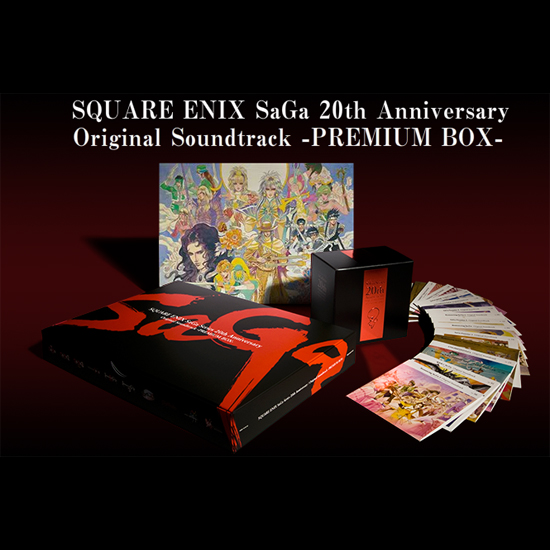
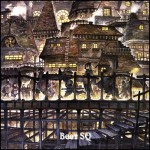
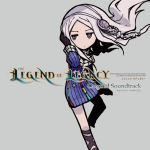
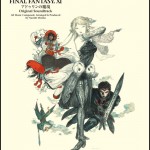
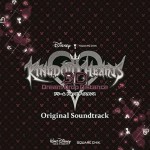







Saga Frontier was composed by Kenji Ito, not Hamauzu. He only did the second one. Just figured I’d let you know! A nice write up, otherwise.
Oops. Fixed. No wonder the quality bar wasn’t as high on that one. ;D
Love love love this box.
I’m totally shocked to hear you say that SaGa 2 is the least interesting of the Game Boy SaGa soundtracks, though. Not only was it the best of the three games without question, I also think it has the best tunes on it. Specifically, “Theme of the New God,” “Fierce Battle,” and um…well, pretty much everything. The only place I was a little disappointed was the final battle theme.
My very short opinion of this box is that mileage will vary based on games played. I never beat UNLIMITED:SaGa (surprise surprise), and I haven’t played the three SNES titles (for obvious, localization-related reasons). As such, I have more enjoyable experiences listening to the soundtracks I’m familiar with. That’s part of what made the Game Boy tracks so awesome for me.
(that said, U:SaGa is still awesome thanks to Hamauzu)
Hot damn, nice work on tackling this beast of a box set. Not too surprised with your reactions towards Unlimited Saga and SaGa Frontier 2 since Hamauzu’s probably got a slot somewhere on my top 5 VGM composers list.
I will say that I’m one of the few who loved Unlimited Saga after I got past the ridiculously steep learning curve.
“…it features music from some of the most famous Square Enix composers in history, including Nobuo Uematsu, Kenji Ito, and Masashi Hamauzu, which I think some tend to forget”
Heh, I feel the exact opposite. SaGa is Hamauzu to me (U:S and Saga II), and I tend to ignore that there are other entries in the series since Hamauzu’s work on the series is its pinnacle.
Going on synth sounds, Hamauzu’s stuff sounds incredible thanks to Ryo Yamazaki. You should check out the liners to both albums over at Chudah’s Corner:
http://chudahs-corner.com/liners/index.php?catalog=SSCX-10031 (SaGa II)
http://chudahs-corner.com/liners/index.php?catalog=SSCX-10078~9 (U:SaGa… great stuff!)
What Tommy said. Ryo Yamazaki is an INCREDIBLE synth manipulator. Square (Square Enix) has had a lot of great people in this department that get overlooked.
[…] pieces that he wrote over 10-15 years ago. We also discussed his work in our recent review of the SaGa Premium Box, so he should definitely sound familiar even if you don’t know his music. While his […]
That is an incredibly large package of music. Definitely goes to show there was more to Sega than most give credit, Sonic is generally all that comes to mind, and perhaps Streets of Rage. I definitely wouldn’t mind listening to that, I’m always in search for new music.